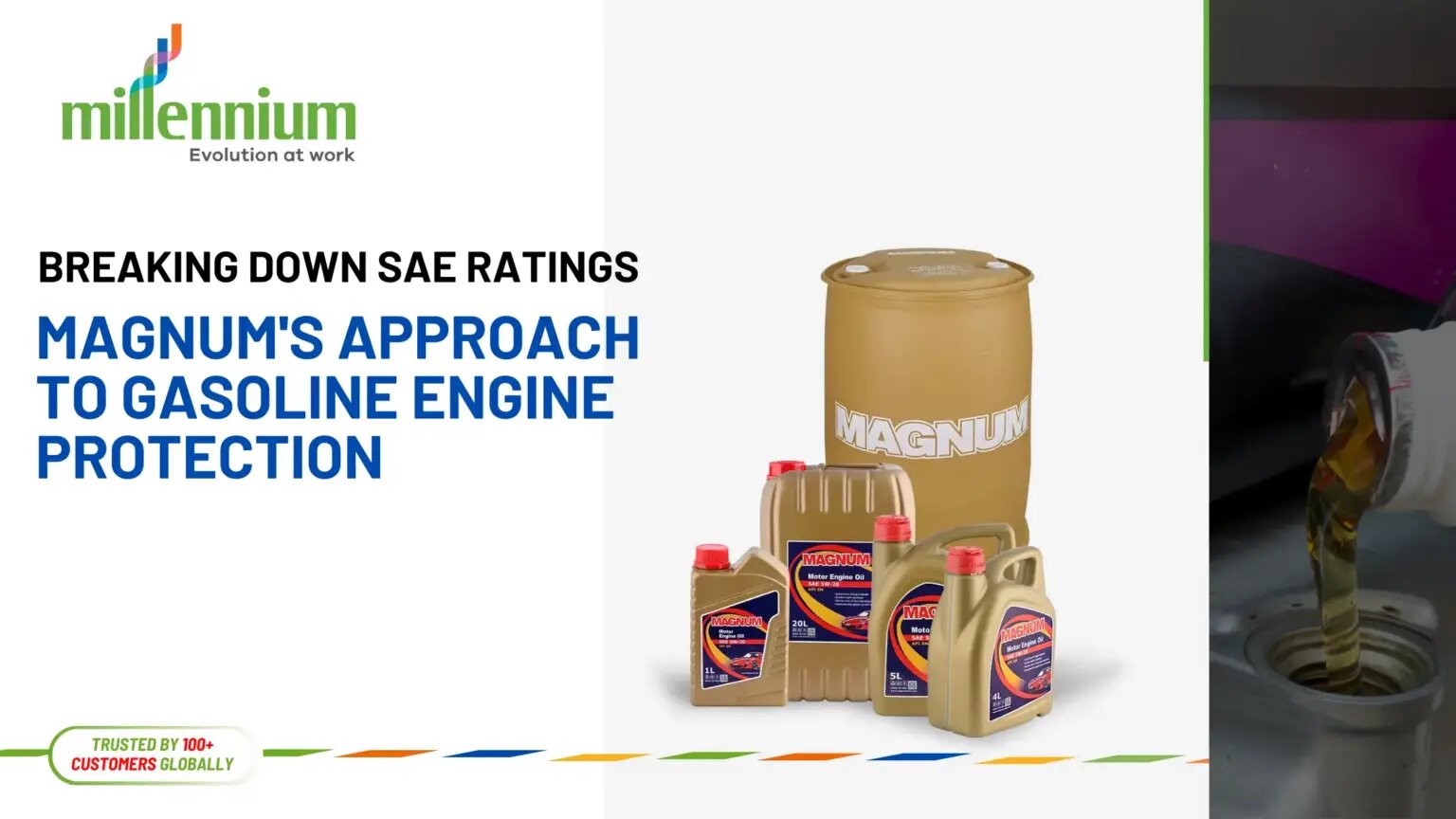Understanding the SAE (Society of Automotive Engineers) oil rating system is essential for selecting the right engine oil for your vehicle. The SAE rating provides a standardized measure of an oil’s viscosity, which is crucial for ensuring proper lubrication and protection across varying temperatures. For instance, an oil labeled 10W-30 signifies that it has a viscosity of 10 in winter (W) and 30 at the engine’s operating temperature. This dual rating ensures the oil can provide adequate flow during cold starts while maintaining sufficient thickness at high temperatures, safeguarding the engine from wear and tear.
MAGNUM has built its reputation on creating high-performance gasoline engine oils tailored to meet the demanding requirements of modern gasoline engines. Their approach is rooted in extensive research and development, leading to formulations that exceed standard industry specifications. MAGNUM oils are engineered with high-quality base stocks and advanced additive packages that enhance their protective capabilities. This meticulous attention to detail ensures that MAGNUM oils provide exceptional protection against engine wear, corrosion, and the buildup of harmful deposits.
One of the standout benefits of MAGNUM oils is their exceptional viscosity stability, which aligns with the principles of SAE oil rating. These oils maintain their viscosity across a broad range of temperatures, ensuring consistent engine protection whether you’re starting your car on a cold winter morning or driving in the heat of summer. Additionally, MAGNUM oils contain detergents and dispersants that keep engines clean by preventing sludge and varnish formation, thereby maintaining engine efficiency and performance.
MAGNUM’s commitment to quality and performance is evident in the rigorous testing processes their oils undergo. Each batch of MAGNUM oil is subjected to a series of tests to ensure it meets or exceeds the required SAE standards. These tests assess the oil’s viscosity, volatility, oxidation stability, and wear protection capabilities. By maintaining such high standards, MAGNUM ensures that their oils can reliably protect engines under a wide range of operating conditions, from everyday commuting to high-performance driving.
Choosing the right MAGNUM oil involves more than just understanding SAE ratings; it also requires consideration of your vehicle’s specific needs and operating conditions. For instance, climate plays a significant role in oil selection. In colder regions, an oil with a lower winter viscosity rating, such as 5W-30, may be more suitable to ensure easy starts and rapid lubrication. Conversely, in hotter climates or for high-performance engines, a higher viscosity oil like 10W-40 might be preferred to provide robust protection under high-stress conditions.
In addition to climate, other factors like engine age and driving habits should influence your oil choice. Older engines or those with higher mileage may benefit from a thicker oil, such as MAGNUM 10W-40 or 20W-50, to compensate for increased engine clearances and potential oil consumption. For newer engines or those designed for high fuel efficiency, a lower viscosity oil, such as MAGNUM 0W-20 or 5W-20, can help reduce friction and improve fuel economy while still providing adequate protection.
Ultimately, using the correct MAGNUM oil according to SAE ratings can significantly enhance your engine’s performance and longevity. By adhering to the manufacturer’s recommendations and considering factors like climate, engine age, and driving habits, you can ensure that your engine receives optimal protection. MAGNUM’s commitment to quality and innovation means their oils not only meet but often exceed SAE standards, offering peace of mind and superior engine care for gasoline engine owners. With MAGNUM, you can be confident that your engine is well-protected, ensuring smoother performance and a longer lifespan.
